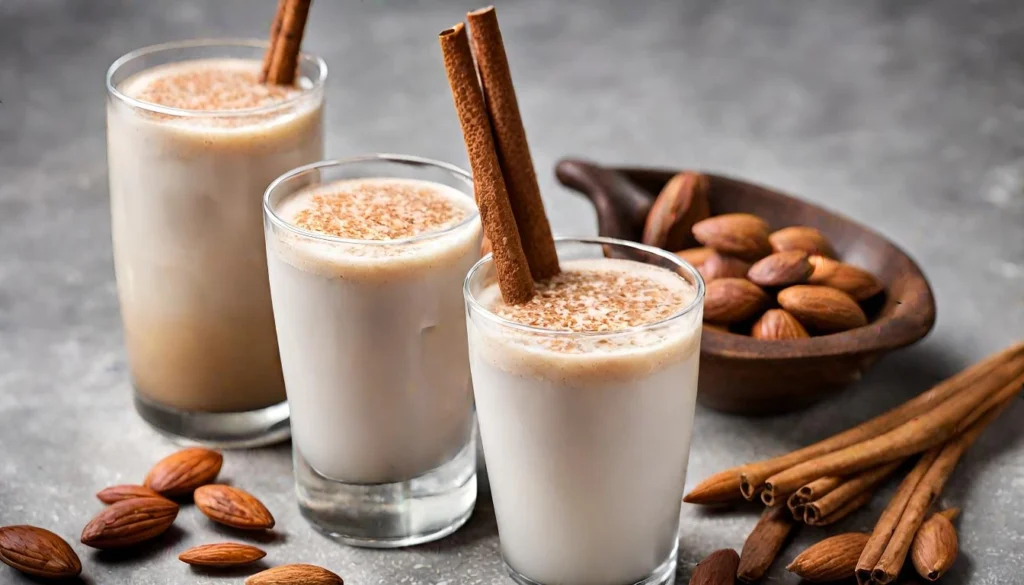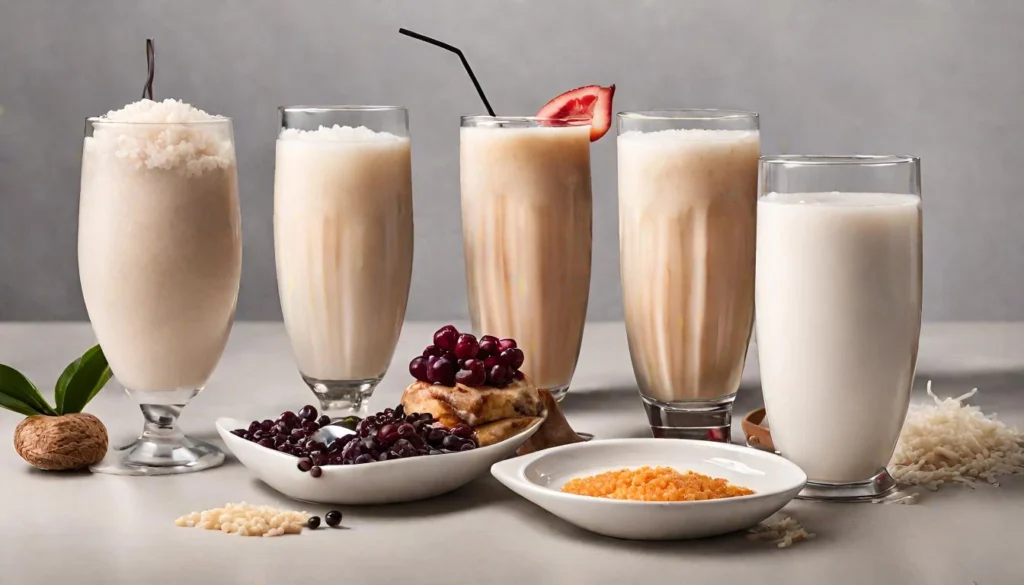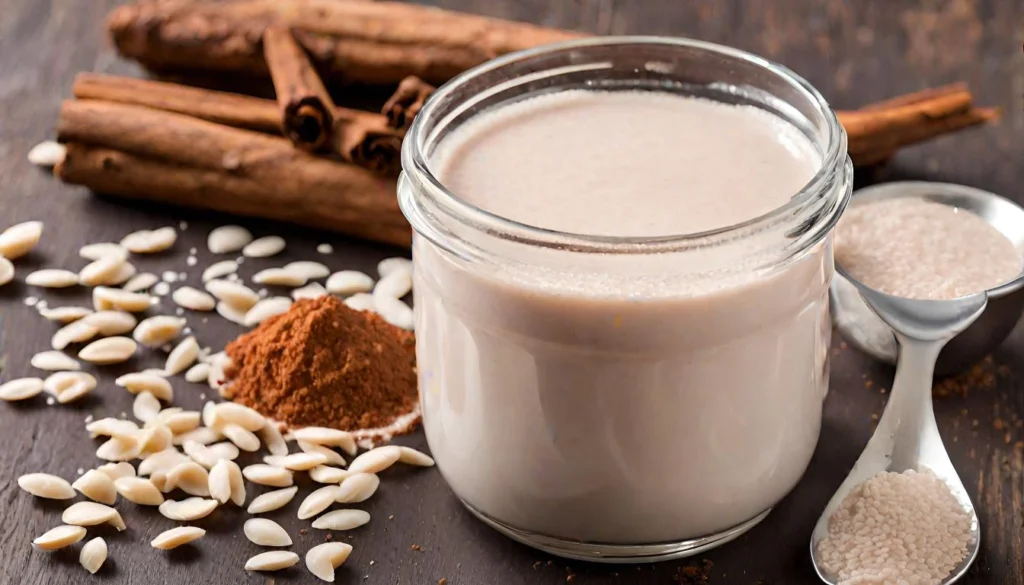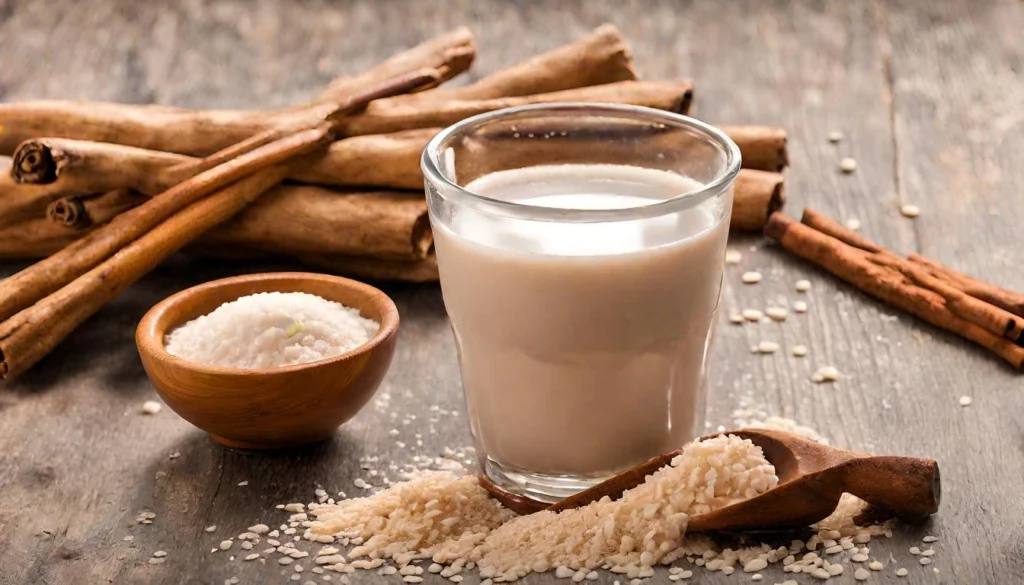
In this comprehensive exploration of Orchata, we delve into its rich cultural tapestry, uncovering its historical roots, diverse ingredients, and the myriad ways it touches our lives. From its health benefits to its presence in modern cuisine, this article is a celebration of Orchata’s multifaceted existence. Let’s embark on this flavorful journey, discovering the essence of this beloved beverage.
Introduction to Orchata
What is Orchata?
Orchata, a name that rolls off the tongue as smoothly as the drink itself, is more than just a beverage; it’s a symphony of flavors and a testament to cultural fusion. Moreover, this delightful drink, traditionally a blend of rice, almonds, cinnamon, and sometimes vanilla, has traversed continents and centuries, evolving with each sip into the Orchata we know today.
Historical Background
The story of Orchata begins in ancient times, with roots tracing back to early Egypt and the Roman Empire. Originally, people crafted it from ‘chufa’ or tiger nuts, making it a beverage fit for pharaohs. Fast forward to the 700s, when Moorish traders introduced the chufa plant to the Mediterranean, particularly to Valencia, Spain. Here, Orchata underwent a transformation, incorporating local ingredients and tastes. The Spanish term “horchata,” derived from the Latin “hordeāta,” signifies its deep historical connections. Over time, Orchata’s journey took it across oceans to Latin America, where it embraced even more variations, becoming an integral part of many cultures’ culinary heritage.
In the next section, we’ll explore the cultural significance of Traditional Orchata, tracing its impact across different societies and how it has become a symbol of tradition and comfort for many.
In-depth research on Orchata’s medicinal properties offers a deeper understanding of its historical and cultural journey, shedding light on how this humble drink became a global phenomenon.
Cultural Significance of Orchata
Orchata in Different Cultures
Orchata is not just a drink; it’s a cultural icon. Furthermore, in every region that embraces it, Orchata acquires a unique character, reflecting the local ethos. In Spain, it remains a sweet, refreshing summer drink, often linked to social gatherings and family celebrations. Moving across the Atlantic to Latin America, each country adds its twist, infusing local flavors and traditions. In Mexico, for instance, Orchata is a staple in street food culture, often enjoyed alongside spicy dishes as a soothing counterbalance. This beverage transcends mere refreshment; it’s a symbol of hospitality and warmth, a common thread weaving through diverse cultural tapestries.

Traditional Uses and Beliefs
The significance of Orchata goes beyond taste and refreshment. Also, many cultures believe that Orchata has health-giving properties and often associate it with healing and well-being. In Southern Ecuador, for example, Orchata is not just a drink but a herbal mixture infusion. Believed to aid digestion, improve memory, and offer anti-inflammatory benefits. Likewise, this traditional belief in its medicinal properties highlights Orchata’s role in folk medicine, passed down through generations. It’s a drink that comforts not just the body but also the soul, a testament to the ancient wisdom of natural remedies.
Exploring various Orchata recipes can inspire how people adapt and enjoy this traditional drink in different cultures. Diverse Orchata recipes for inspiration showcase the creativity and cultural significance embedded in each version of this timeless beverage.
Ingredients and Variations of Orchata
Common Ingredients in Orchata
At its core, Orchata is a marvel of simplicity and flavor. The traditional recipe often includes rice, almonds, cinnamon, and sometimes vanilla, blended into a creamy, refreshing drink. However, the true beauty of Rice drink lies in its versatility. Each ingredient plays a pivotal role: rice provides a smooth base, almonds add a nutty depth, cinnamon infuses a warm spice, and vanilla rounds it off with a subtle sweetness. This harmonious blend creates a drink that’s both comforting and invigorating.

Regional Variations of Orchata
Orchata’s adaptability is evident in its regional variations. In Mexico, the addition of vanilla and sometimes lime zest brings a unique twist, making it a beloved companion to spicy cuisines. In contrast, the Spanish version, made from tiger nuts, offers a distinctively different taste and texture. Meanwhile, in certain parts of Latin America, sesame seeds or barley are utilized, introducing an additional layer of complexity to this versatile drink. Likewise, each variation of Orchata is a reflection of its local culture, ingredients, and culinary traditions, making it a drink that truly belongs to the world.
For a deeper dive into a traditional Mexican version of Orchata. Traditional Mexican Orchata recipe provides a perfect example of how this beverage is lovingly crafted using specific regional ingredients, offering a taste of Mexico’s rich culinary heritage.
Health Benefits and Nutritional Value
Medicinal Properties
The allure of Orchata extends beyond its taste to its health benefits. Traditionally, Orchata has been associated with various medicinal properties. Additionally, in many cultures, it’s considered a digestive aid. Moreover, thanks to ingredients like cinnamon and rice, which are known for their soothing effects on the stomach. Additionally, the nuts and seeds often used in Rice drink are rich in vitamins and minerals, contributing to overall health. Some studies suggest that the ingredients in Orchata can have anti-inflammatory properties, making it more than just a refreshing drink, but also a contributor to wellbeing.
Nutritional Components
Nutritionally, Orchata is a powerhouse. The rice and nuts provide carbohydrates and healthy fats, offering a sustained energy release. Cinnamon, apart from adding flavor, is loaded with antioxidants and has been linked to blood sugar regulation. Also, when made with dairy or plant-based milk, Rice drink can also be a good source of calcium and protein. It’s a drink that not only quenches thirst but also nourishes the body. Making it a wholesome choice for any time of the day.
In the next part, we’ll delve into the art of preparing Orchata. Exploring traditional methods and modern twists that make this drink a beloved treat worldwide.
Understanding the nutritional aspects of Orchata enhances its appreciation. In-depth research on Orchata’s medicinal properties provides valuable insights into how this traditional drink contributes to health and wellness, blending taste with therapeutic benefits.
Preparing Orchata
Traditional Preparation Methods
The art of making Orchata is as rich in tradition as the drink itself. Traditionally, the process starts by soaking rice or tiger nuts overnight, followed by grinding them into a fine paste. This paste is combined with water, cinnamon, and sweeteners such as sugar or honey, resulting in a milky mixture. The blend is then strained to achieve Orchata’s distinctive smooth and creamy texture. This method, passed down through generations, is a testament to the simplicity and ingenuity of traditional culinary practices, where patience and time-honored techniques yield a drink that’s both refreshing and soul-satisfying.

Modern Recipes and Variations
In the modern culinary world, Orchata has seen a plethora of variations. Likewise, contemporary recipes often include blending rice with almonds or other nuts for a richer flavor profile. Innovations like adding vanilla, lime zest, or even coconut milk cater to diverse palates and dietary preferences. Some even experiment with different sweeteners like agave or maple syrup for a healthier twist. These modern takes on Orchata not only honor its traditional roots but also celebrate its evolving nature. Making it a versatile drink for contemporary tastes.
In the next section, we’ll explore Orchata’s role in modern cuisine, from gourmet restaurants to street food, highlighting its versatility and enduring popularity.
For those looking to try their hand at a classic version of this beloved drink, the Traditional Mexican Orchata recipe offers a perfect starting point, blending tradition with the ease of modern cooking techniques.
Orchata in Modern Cuisine
Orchata in Restaurants and Cafes
In the bustling world of modern cuisine, Orchata has found a special place in the hearts of chefs and food enthusiasts alike. Furthermore, from upscale restaurants to cozy cafes, Rice drink is undergoing a reimagining in various forms. Also, in many establishments, it is presented as a classic beverage, frequently paired with spicy dishes or enjoyed on its own as a refreshing delight. Some innovative chefs are even incorporating Rice beverage into desserts, like ice creams and pastries, infusing a traditional flavor into contemporary culinary creations. Its versatility and unique taste make Orchata a beloved choice for both traditionalists and modernists in the culinary world.

Fusion and Innovative Uses
The journey of Orchata from a traditional drink to a modern culinary ingredient is a story of innovation and fusion. In the realm of mixology, Orchata serves as a versatile base for creative cocktails. Its sweet and creamy texture blends seamlessly with various spirits, giving rise to unique and exciting drinks. In addition, in the world of fusion cuisine, chefs are experimenting by combining Rice beverage with flavors from different culinary traditions, creating dishes that are a celebration of global tastes. This adaptability of Orchata not only showcases its versatility but also its ability to bridge cultures and tastes, making it a truly global beverage.
Exploring Orchata’s role in modern cuisine offers a glimpse into its versatility and adaptability. Diverse Orchata recipes for inspiration showcase how this traditional drink can be transformed into an array of delightful culinary creations, appealing to a wide range of tastes and preferences.
Frequently Asked Questions about Orchata
Common Queries about Orchata
Orchata, with its rich history and diverse variations, naturally sparks curiosity and questions. Here, we address some of the most common inquiries about this beloved beverage:
- What is the origin of Orchata?
It has its origins in ancient Egypt and was subsequently popularized in Spain, undergoing significant transformations along the way. Its journey across the globe has led to various regional adaptations, making it a drink with a rich and varied history. - Can Orchata be made vegan?
Absolutely! It is often vegan, especially the versions that use rice and nuts. For those recipes that use dairy, plant-based milks like almond or coconut milk can be excellent substitutes. - Is Orchata gluten-free?
Yes, most recipes are naturally gluten-free, as they primarily use rice, nuts, and spices. However, it’s always advisable to check the ingredients, especially in commercial preparations. - How does it differ across cultures?
While the basic concept of Orchata remains the same, its ingredients and preparation methods vary. In Spain, people make it with tiger nuts, while in Latin America, it’s more common to use rice and almonds. Each region adds its unique touch, reflecting local tastes and traditions. - Can it be used in cooking?
Definitely! Orchata’s sweet and creamy profile makes it a versatile ingredient in both sweet and savory dishes, from desserts to marinades. - Is Orchata healthy?
It can be a healthy choice, especially when made with natural sweeteners and without artificial additives. Its ingredients, like cinnamon and nuts, offer various health benefits, including aiding digestion and providing essential nutrients.
For those interested in the health aspects of Orchata, In-depth research on Orchata’s medicinal properties provides valuable insights into its nutritional benefits and traditional uses in various cultures.
Summary and Final Thoughts
Orchata, a humble beverage with ancient roots, has traversed time and geography to become a beloved global phenomenon. From its origins in Egypt to its evolution in Spain and its myriad adaptations in Latin America, Rice beverage has proven to be much more than a simple drink. It’s a cultural symbol, a bearer of tradition, and a canvas for culinary innovation. Whether enjoyed in its traditional form or as part of modern cuisine, Horchata continues to delight with its unique blend of flavors and its comforting, nourishing qualities. Discover more about unique global flavors in our Flavors of the World category.
This exploration of Horchata reveals a drink that is not only versatile and delicious but also steeped in history and cultural significance. It’s a testament to the power of culinary traditions in connecting us across cultures and generations. As we’ve seen, Orchata adapts and thrives, reflecting the tastes and traditions of the people who embrace it. Its journey from ancient times to contemporary kitchens is a story of adaptation, innovation, and enduring appeal.
Orchata’s story is far from over. As it continues to evolve and inspire, it reminds us of the rich tapestry of our global culinary heritage and the endless possibilities that lie in a simple, yet extraordinary, glass of Orchata.




